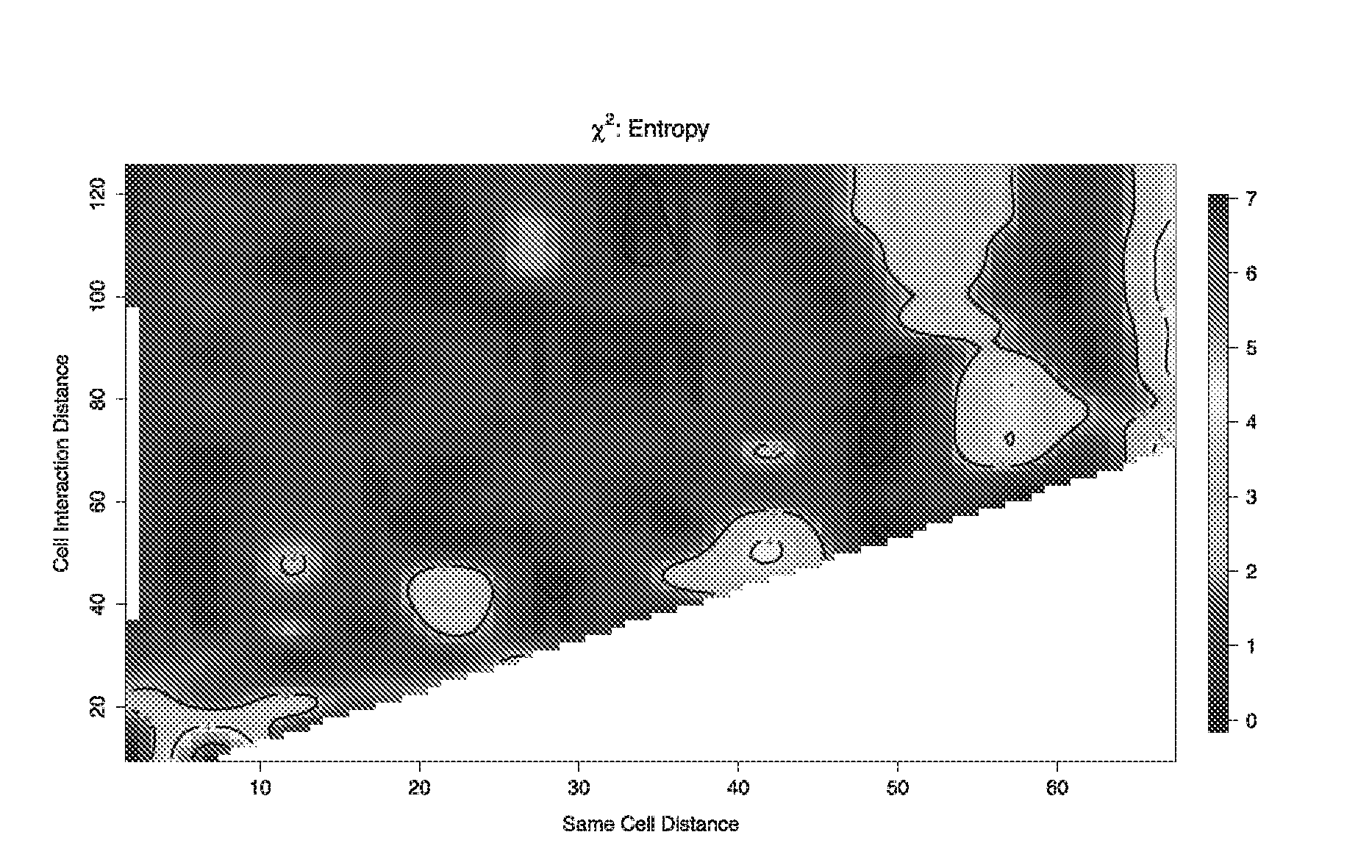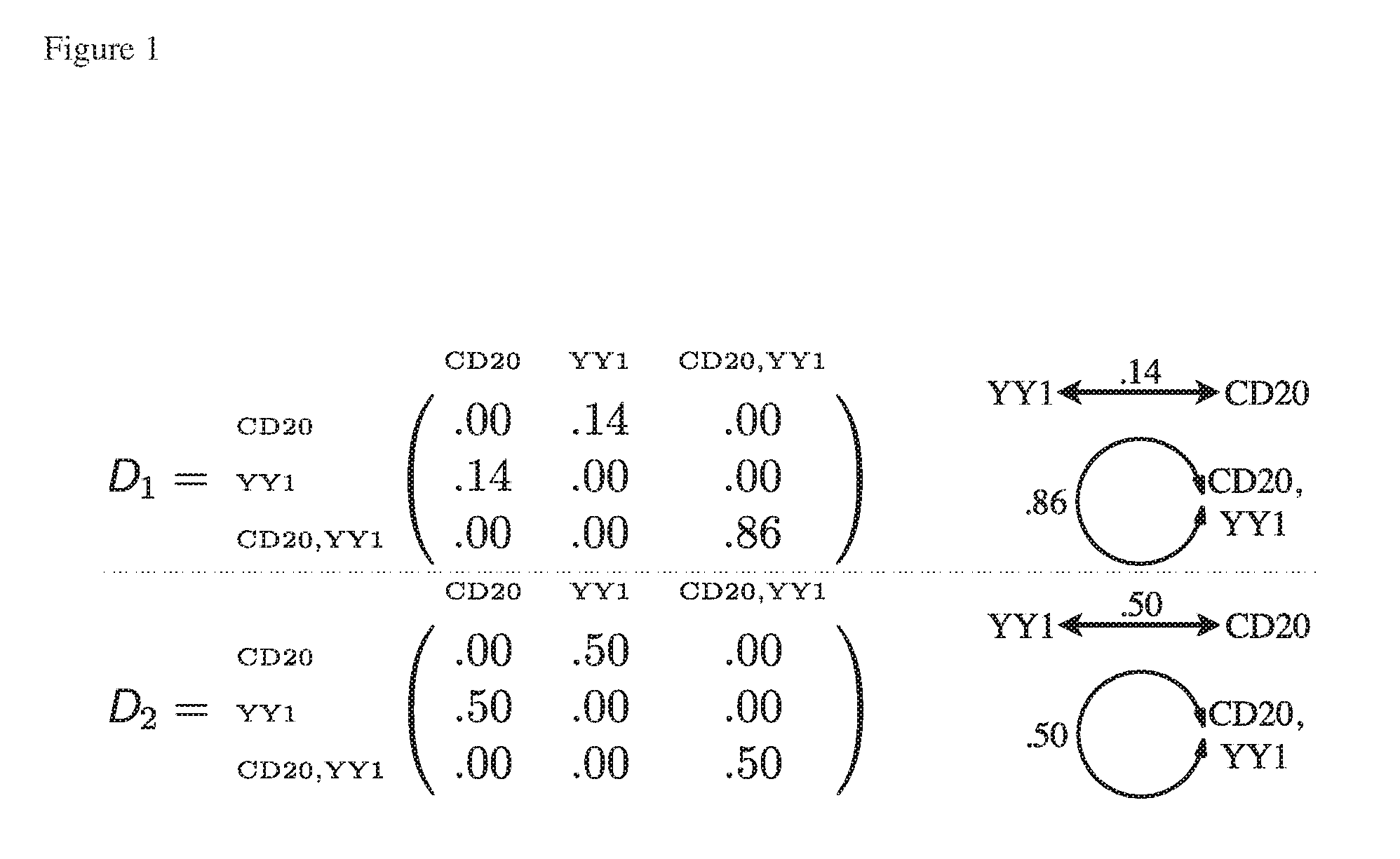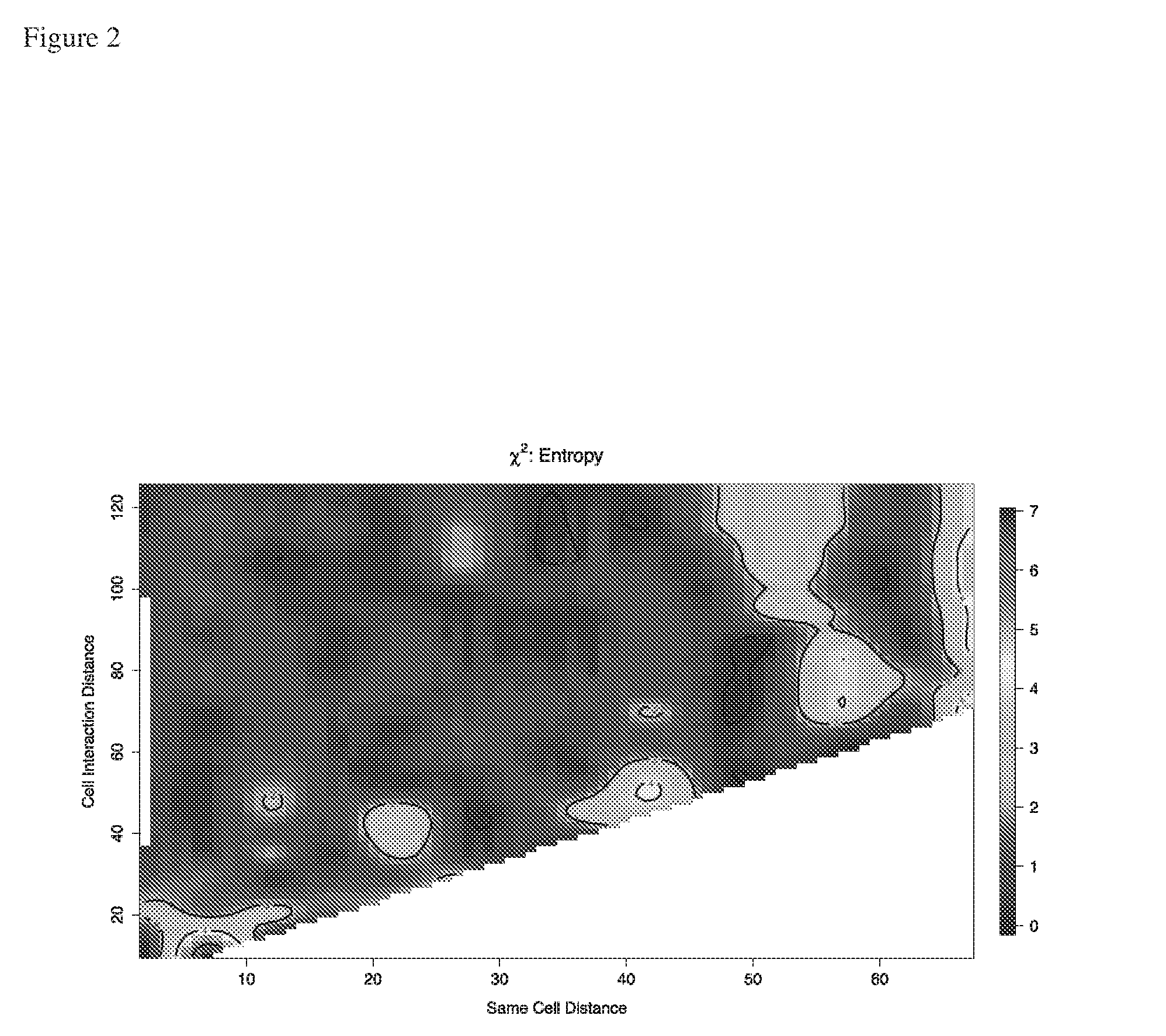Biomarker method
a biomarker and method technology, applied in the field of biomarker methods, can solve the problems of difficult for even expert clinicians and/or researchers to interpret images including a plurality of biomarkers, and the difficulty of image quantification,
- Summary
- Abstract
- Description
- Claims
- Application Information
AI Technical Summary
Benefits of technology
Problems solved by technology
Method used
Image
Examples
example 1
Study of Follicular Lymphoma
[0249]This example applied the method of the present application to the study of follicular lymphoma. In particular, the method was applied to data from multispectral microscopy of multiply-stained tissue sections from a sample of follicular lymphoma (FL) subjects, and used to identify subject groups that differ in survival.
Subjects and Samples
[0250]Twenty six archived human lymph nodes from subjects (16 male, 10 female, aged 36-77 years, mean 55 years) with a diagnosis of FL were collected at initial diagnosis, prior to the treatment. Written informed consent and local research ethics committee approval were obtained. The material was routinely processed by fixation in formalin and paraffin embedding. Clinical data and up to 14 years of follow-up and survival data were available for each sample (19 dead, 7 alive; median time to death 32 months; range 2-170 months; 171 months follow-up in all subjects alive at the end of the study period). Paraffin-embedd...
example 2
Alternative Study of Follicular Lymphoma
[0261]A tissue microarray comprising 40 FL samples was used in triplex immunohistochemistry for FOXP3, CD3 and CD69. Multispectral imaging was used to determine the spatial locations of FOXP3 and CD69 positive T-cells which were used in HID analysis according to the method of the present application to assess prognostic significance of cellular patterns quantified by Shannon entropy.
[0262]The method used for Example 2 corresponds to that of Example 1, except a larger number of subjects were used with different biomarkers.
[0263]From the contour plot in FIG. 4, the optimal pairing and interaction distances of dp=13 and di=60, were determined (both measured in pixels using a ×400 magnification and a LeitzDiaplan fluorescence microscope and a Nuance spectral analyser as used in Example 1). These optimal distances can be obtained by calculating the “hottest” point of the region of the contour plot marked as “10” (i.e. towards the upper end of the k...
PUM
 Login to View More
Login to View More Abstract
Description
Claims
Application Information
 Login to View More
Login to View More - R&D
- Intellectual Property
- Life Sciences
- Materials
- Tech Scout
- Unparalleled Data Quality
- Higher Quality Content
- 60% Fewer Hallucinations
Browse by: Latest US Patents, China's latest patents, Technical Efficacy Thesaurus, Application Domain, Technology Topic, Popular Technical Reports.
© 2025 PatSnap. All rights reserved.Legal|Privacy policy|Modern Slavery Act Transparency Statement|Sitemap|About US| Contact US: help@patsnap.com



